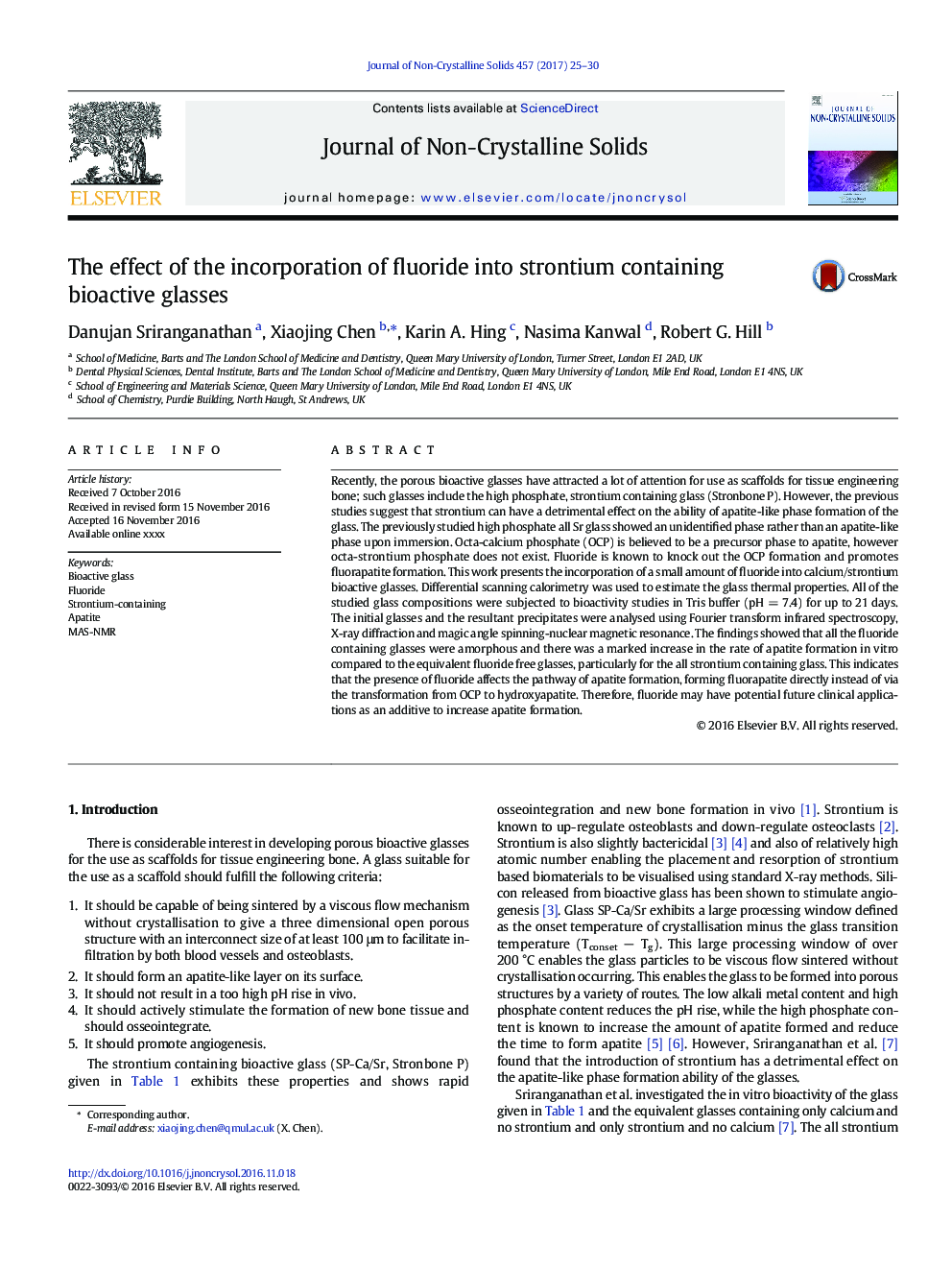| Article ID | Journal | Published Year | Pages | File Type |
|---|---|---|---|---|
| 5441514 | Journal of Non-Crystalline Solids | 2017 | 6 Pages |
Abstract
Recently, the porous bioactive glasses have attracted a lot of attention for use as scaffolds for tissue engineering bone; such glasses include the high phosphate, strontium containing glass (Stronbone P). However, the previous studies suggest that strontium can have a detrimental effect on the ability of apatite-like phase formation of the glass. The previously studied high phosphate all Sr glass showed an unidentified phase rather than an apatite-like phase upon immersion. Octa-calcium phosphate (OCP) is believed to be a precursor phase to apatite, however octa-strontium phosphate does not exist. Fluoride is known to knock out the OCP formation and promotes fluorapatite formation. This work presents the incorporation of a small amount of fluoride into calcium/strontium bioactive glasses. Differential scanning calorimetry was used to estimate the glass thermal properties. All of the studied glass compositions were subjected to bioactivity studies in Tris buffer (pHÂ =Â 7.4) for up to 21Â days. The initial glasses and the resultant precipitates were analysed using Fourier transform infrared spectroscopy, X-ray diffraction and magic angle spinning-nuclear magnetic resonance. The findings showed that all the fluoride containing glasses were amorphous and there was a marked increase in the rate of apatite formation in vitro compared to the equivalent fluoride free glasses, particularly for the all strontium containing glass. This indicates that the presence of fluoride affects the pathway of apatite formation, forming fluorapatite directly instead of via the transformation from OCP to hydroxyapatite. Therefore, fluoride may have potential future clinical applications as an additive to increase apatite formation.
Related Topics
Physical Sciences and Engineering
Materials Science
Ceramics and Composites
Authors
Danujan Sriranganathan, Xiaojing Chen, Karin A. Hing, Nasima Kanwal, Robert G. Hill,
